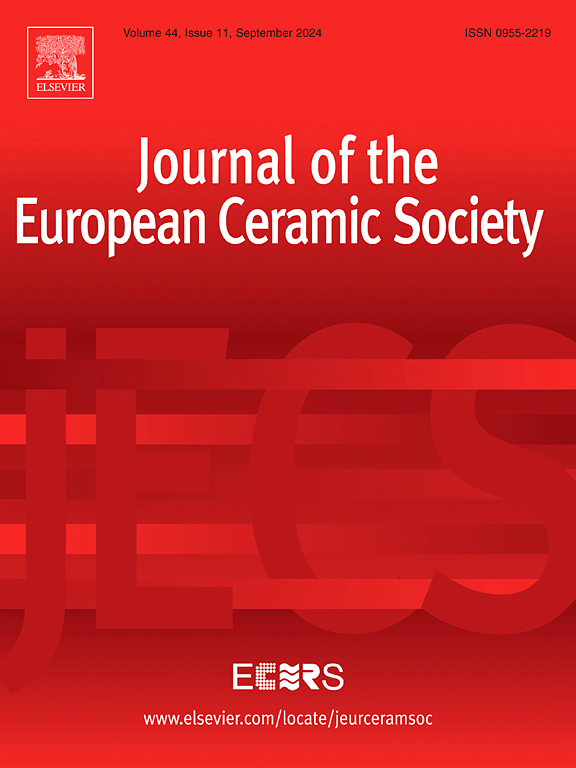Ultra-high Q×f and low εr of microwave dielectric ceramic SrYb2O4 with mitigated rattling effect and design of dielectric resonant antenna for 5 G applications
IF 5.8
2区 材料科学
Q1 MATERIALS SCIENCE, CERAMICS
Journal of The European Ceramic Society
Pub Date : 2025-06-24
DOI:10.1016/j.jeurceramsoc.2025.117637
引用次数: 0
Abstract
Binary rare-earth oxides exhibit promising potential for applications in high-frequency wireless communication devices due to their low permittivity and adjustable resonant frequency. However, a significant challenge remains in achieving ultra-low dielectric loss. The rattling effect of cations is the primary structural factor that influences losses and has become an important method for modulating dielectric properties. In this work, we propose a strategy to mitigate the rattling effect of cations by regulating the ion radius difference between Sr and Ln (lanthanide), reducing the microwave dielectric loss of SrYb2O4 ceramic. The SrYb2O4 ceramic was prepared at 1450 °C, exhibiting a low εr of 16.1, a negative τf of −31.33 ppm/°C, and an ultra-high Q×f of 118,777 GHz. The εr and τf were affected by the ionic polarizability and the bond valence. The reduction of the cationic rattling effect resulted in a higher Q×f. Furthermore, a dielectric resonator antenna was designed for 5 G communication applications.
微波介质陶瓷SrYb2O4的超高Q×f和低εr减振效应及5 G介质谐振天线设计
二元稀土氧化物具有低介电常数和可调谐振频率的特点,在高频无线通信设备中具有广阔的应用前景。然而,在实现超低介电损耗方面仍然存在重大挑战。阳离子的咔嗒效应是影响损耗的主要结构因素,已成为调制介电性能的重要方法。在这项工作中,我们提出了一种策略,通过调节Sr和Ln(镧系元素)之间的离子半径差来减轻阳离子的嘎嘎效应,降低SrYb2O4陶瓷的微波介电损耗。在1450℃下制备出SrYb2O4陶瓷,εr低为16.1,τf负为- 31.33 ppm/°C,超高Q×f为118,777 GHz。εr和τf受离子极化率和键价的影响。阳离子咔嗒效应的降低导致了更高的Q×f。此外,还设计了一种适用于5 G通信的介质谐振器天线。
本文章由计算机程序翻译,如有差异,请以英文原文为准。
求助全文
约1分钟内获得全文
求助全文
来源期刊

Journal of The European Ceramic Society
工程技术-材料科学:硅酸盐
CiteScore
10.70
自引率
12.30%
发文量
863
审稿时长
35 days
期刊介绍:
The Journal of the European Ceramic Society publishes the results of original research and reviews relating to ceramic materials. Papers of either an experimental or theoretical character will be welcomed on a fully international basis. The emphasis is on novel generic science concerning the relationships between processing, microstructure and properties of polycrystalline ceramics consolidated at high temperature. Papers may relate to any of the conventional categories of ceramic: structural, functional, traditional or composite. The central objective is to sustain a high standard of research quality by means of appropriate reviewing procedures.
 求助内容:
求助内容: 应助结果提醒方式:
应助结果提醒方式:


